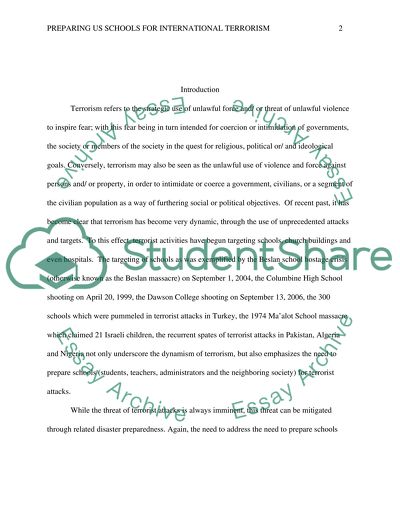Cite this document
(“Preparing United States Schools for International Terrorist Violence Essay”, n.d.)
Preparing United States Schools for International Terrorist Violence Essay. Retrieved from https://studentshare.org/sociology/1485528-preparing-united-states-schools-for-international
Preparing United States Schools for International Terrorist Violence Essay. Retrieved from https://studentshare.org/sociology/1485528-preparing-united-states-schools-for-international
(Preparing United States Schools for International Terrorist Violence Essay)
Preparing United States Schools for International Terrorist Violence Essay. https://studentshare.org/sociology/1485528-preparing-united-states-schools-for-international.
Preparing United States Schools for International Terrorist Violence Essay. https://studentshare.org/sociology/1485528-preparing-united-states-schools-for-international.
“Preparing United States Schools for International Terrorist Violence Essay”, n.d. https://studentshare.org/sociology/1485528-preparing-united-states-schools-for-international.


